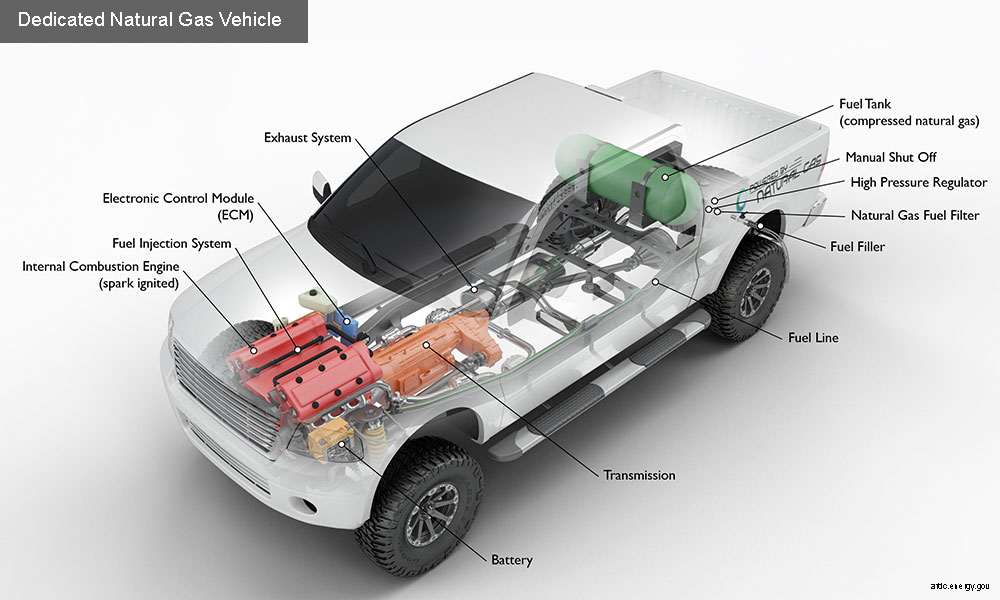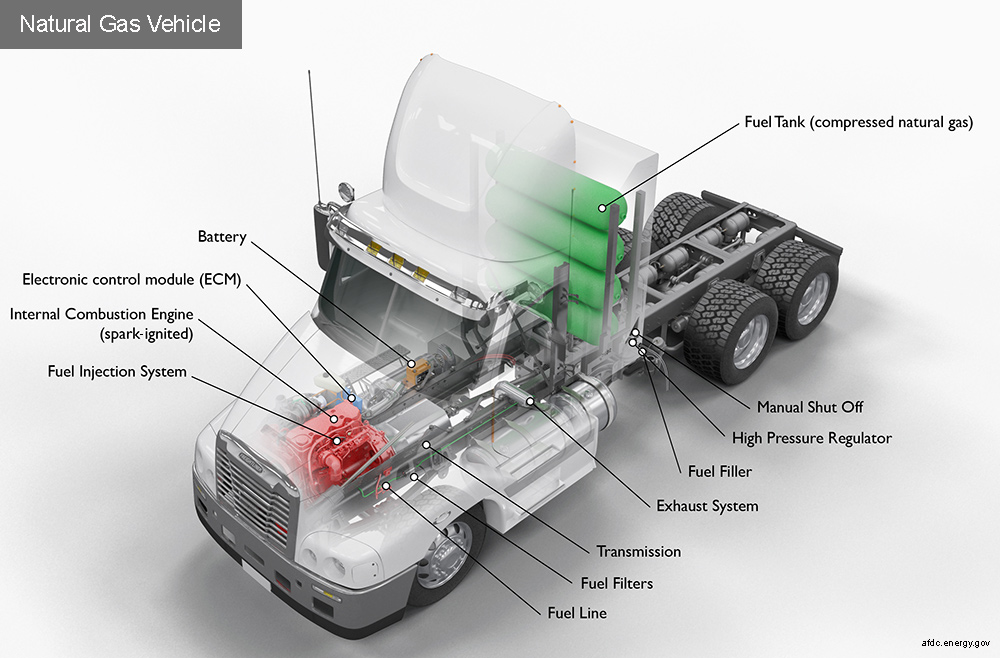Natural Gas
Natural Gas Basics
Natural gas is an odorless, gaseous mixture of hydrocarbons—predominantly made up of methane (CH4).
The vast majority of natural gas in the United States is considered a fossil fuel because it is made from sources formed over millions of years by the action of heat and pressure on organic materials. Alternatively, renewable natural gas (RNG), also known as biomethane, is a pipeline-quality vehicle fuel. It is produced by purifying biogas, which is generated through anaerobic digestion of organic materials—such as waste from landfills and livestock—or through thermochemical processes, such as gasification. RNG qualifies as an advanced biofuel under the Renewable Fuel Standard.
Because RNG is chemically identical to fossil-derived conventional natural gas, it can use the existing natural gas distribution system and must be compressed or liquefied for use in vehicles.
Natural Gas Vehicles
Natural gas powers more than 175,000 vehicles in the United States and roughly 23 million vehicles worldwide. Natural gas vehicles (NGVs) are good choices for high-mileage, centrally fueled fleets because they can provide similar fuel range support for applications that stay within a region supported by reliable compressed natural gas (CNG) fueling. For vehicles that travel long distances, liquefied natural gas (LNG) offers a greater energy density than CNG, meaning the fuel range is more comparable to conventional fuel. The advantages of natural gas as a transportation fuel include its domestic availability, widespread distribution infrastructure, and reduced greenhouse gas emissions over conventional gasoline and diesel fuels.
There are three types of NGVs:
- Dedicated: These vehicles are designed to run only on natural gas.
- Bi-fuel: These vehicles have two separate fueling systems that enable them to run on either natural gas or gasoline.
- Dual-fuel: These vehicles have fuel systems that run on natural gas but use diesel fuel for ignition assistance. This configuration is traditionally limited to heavy-duty vehicles.
Learn more about Natural Gas Vehicles here!



LNG is natural gas in its liquid form. LNG is produced by purifying natural gas and super-cooling it to -260°F to turn it into a liquid. During the process known as liquefaction, natural gas is cooled below its boiling point, removing most of the extraneous compounds found in the fuel. The remaining natural gas is primarily methane with small amounts of other hydrocarbons.
Because of LNG’s relatively high production cost, as well as the need to store it in expensive cryogenic tanks, the fuel’s use in commercial applications has been limited. LNG must be kept at cold temperatures and is stored in double-walled, vacuum-insulated pressure vessels. LNG is suitable for trucks that require longer ranges because liquid is denser than gas and, therefore, more energy can be stored by volume. LNG is typically used in medium- and heavy-duty vehicles. One GGE equals about 1.5 gallons of LNG.

CNG is produced by compressing natural gas to less than 1% of its volume at standard atmospheric pressure. To provide adequate driving range, CNG is stored onboard a vehicle in a compressed gaseous state at a pressure of up to 3,600 pounds per square inch.
CNG is used in light-, medium-, and heavy-duty applications. A CNG-powered vehicle gets about the same fuel economy as a conventional gasoline vehicle on a GGE basis. One GGE equals about 5.66 pounds of CNG.
Natural Gas Fueling Station Locator
Find natural gas (CNG and LNG) fueling stations by location or along a route. Use the Advanced Filters to search for private and planned stations, as well as natural gas fueling stations to match certain search criteria.

